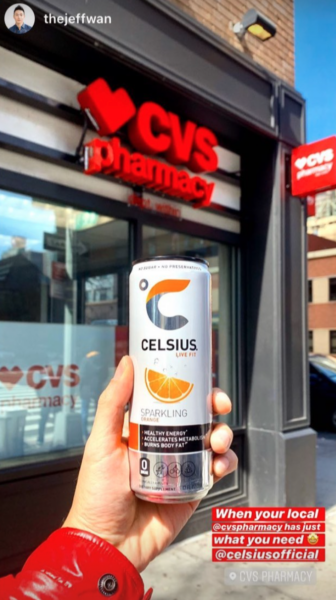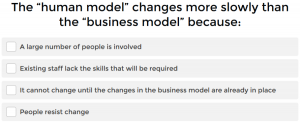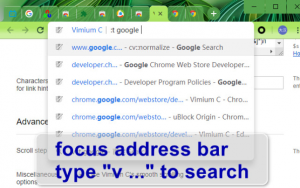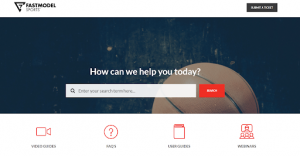Is developing a word of mouth marketing strategy even worth it? Let’s get that out of the way first in case there is any doubt.
Yes, it’s worth it. That’s because nowadays, with all the competition and constant advertising, consumers have become repelled by things that are too salesy or that feel dishonest. So now, consumers seek other consumers for product recommendations.
But as a marketer, you need to understand this new mindset in people and come up with new ways for your products and solutions to be trusted enough for consumers to try them out.
So with that in mind, what do you do? You turn to your customers. The people who tried your products and liked them. But unless they are super fans, they won’t be talking about you as much as you’d like them to.
In this article, we will show you the golden strategies of word of mouth marketing. The most effective ways to get people to recommend you.
But first…
What is word of mouth marketing
This section is necessary because there can be a lot of confusion as to what strategies are actually considered part of word of mouth marketing.
Word of mouth marketing is any strategy that has the purpose of increasing peer-to-peer recommendations of products or services. This includes organic or paid efforts to increase them.
The point is to get people to talk about you in a positive way. These are the word of mouth marketing strategies you can use to do this.
1. Online reviews and customer testimonials
Online customer reviews are more powerful than a lot of people realize. They basically validate that your products are good or bad. And people believe them. Actually, 70% of consumers believe other consumers’ opinions, even if they are strangers.
And 89% of consumers try reading reviews when making purchase decisions. Basically, the majority of people will look for online reviews when purchasing a product, and the majority will make up their minds depending on what they say.
As you can see, it is vital that you don’t forget about your online reviews. So, encourage them as much as possible.
- Send an email a few days after a customer makes a purchase reminding them to leave a review.
- Make it easy for people to leave reviews on your site.
- Make your brand messaging feel human so people are more receptive to your request for a review.
- Directly ask people if they can give you a testimonial you can use on your site or marketing campaigns.
As a final thought for this strategy:
Have at least 5 online reviews. A product with 5 reviews is 270% more likely to be purchased than a product with 0 reviews.
2. User generated content
User-generated content or UGC has become kind of a buzzword when talking about authentic marketing tactics. “Authentic” is another word that is thrown around a lot for these types of topics. But both are actually very important for your marketing strategy.
As we mentioned above, today, people trust other people for brand recommendations. In fact, 92% of consumers trust brand recommendations from people they know. They even trust online reviews from strangers more than ads.
So people using and mentioning your products on social media has the same effect. People see your products on other people and it gives them validation. Just like when you see a product you like on someone in-person.
UGC feels authentic because it is. It’s just people wearing or using a product they like and sometimes directly talking about it.
It feels a lot more authentic than a highly produced product image taken on a professional set posted by a brand.

Here’s how you can encourage UGC:
- Give free products to active people on social media.
- Launch a contest where participants have to submit a picture.
- Ask people to show you how they enjoy your products on social media.
- Create engaging content that people will want to interact with.
Then, if the creator agrees, you could use their content for your marketing campaigns as well.
3. Start a referral program
Another common and effective way of getting word of mouth recommendations is launching a referral program. After all, recommendations are referrals.
A referral program consists of incentivizing recommendations by giving members of the program a unique code or link they can share with their network. Generally, the people that use that code or link for a purchase receive a reward, for example, a discount. While the person making the referral gets another reward, like a discount or store credit.
The idea is that people who like your products are motivated to refer and others are motivated to join.
This strategy is extremely effective. In fact, up to 50% of all purchasing decisions are influenced by referrals and they generate twice the sales of paid advertising.
To start your own referral program, you need to follow these steps:
- Choose your rewards
- Create a page where it will live and that’s easy to find
- Promote it
- Use referral marketing software to generate links for members and track performance
4. Start an affiliate Program
In an affiliate program, the brand selects people who already have an audience to join and provides them with unique links to products on their site. Then, when someone clicks on the links and makes a purchase, the affiliate gets a commission.
This way, brands only have to pay for conversions, which makes this strategy budget-friendly.
Affiliate programs work because members get motivated by the commissions to create content around the brand. This content still feels authentic because the creator is completely responsible for it, the brand just gives them the links so they can earn from their recommendations.
These are the basic steps for starting an affiliate program:
- Choose the commissions
- Create guidelines
- Create a page for people to register for the program
- Review applications and vet candidates
- Promote the program
- Use affiliate marketing software to generate links and track performance
5. Start a brand ambassador program
Brand ambassador programs are also part of word of mouth marketing. And actually, affiliate and referral programs can both be considered brand ambassador programs.
The main point of brand ambassador programs is to get people who love your brand to represent you. These people can be customers, employees, college students, athletes, or whoever you find appropriate.
Once the ambassadors are onboarded, they participate in tasks such as creating online content (user generated content), getting referrals, or hosting in-person events.
This way, brands can spread their message through people who actually care for the brand and in the process increase awareness and word of mouth recommendations. In return, the ambassadors can get free products, cash payments, commissions, or discounts. That depends on the brand.
These are the steps to starting a brand ambassador program:
- Define your goals
- Create guidelines
- Find and recruit the right brand ambassadors
- Train and onboard your brand ambassadors
- Reward your brand ambassadors
- Track your brand ambassadors’ performance
- Scale
6. Create unique and shareable experiences
People will recommend positive experiences without any incentive. That is the basis for word of mouth recommendations. So take a look at your organization and all the interactions it has with users. Then, improve them as much as possible.
Even having great customer service is a worthy reason for a recommendation. User experience optimization is great for getting organic referrals, but you should also improve the product experience.
Having a shareable product and experience is the best way to get people to talk about you organically.
Just think of how common the term “unboxing” is nowadays. Everyone loves a good unboxing and that’s why there is so much user generated content about it. And as we mentioned before, user generated content gets you validation and new customers.
This post was originally published here.
Digital & Social Articles on Business 2 Community
(59)








